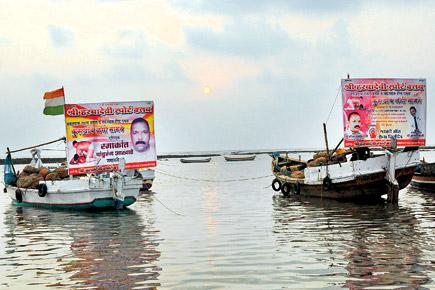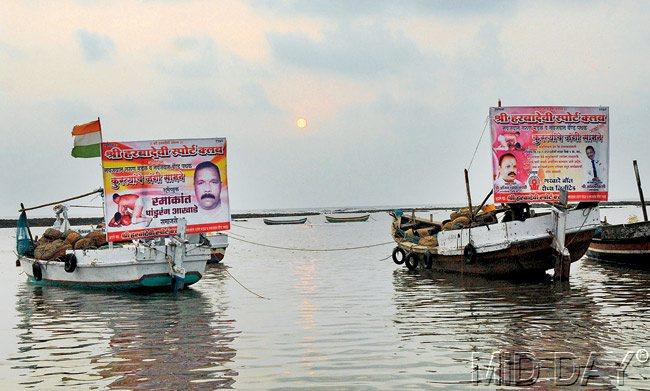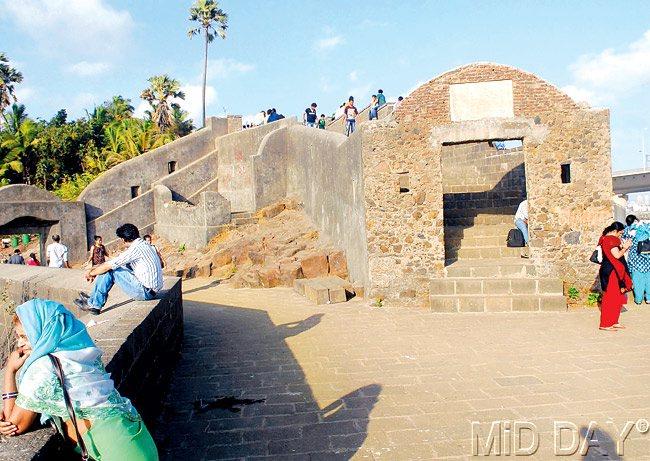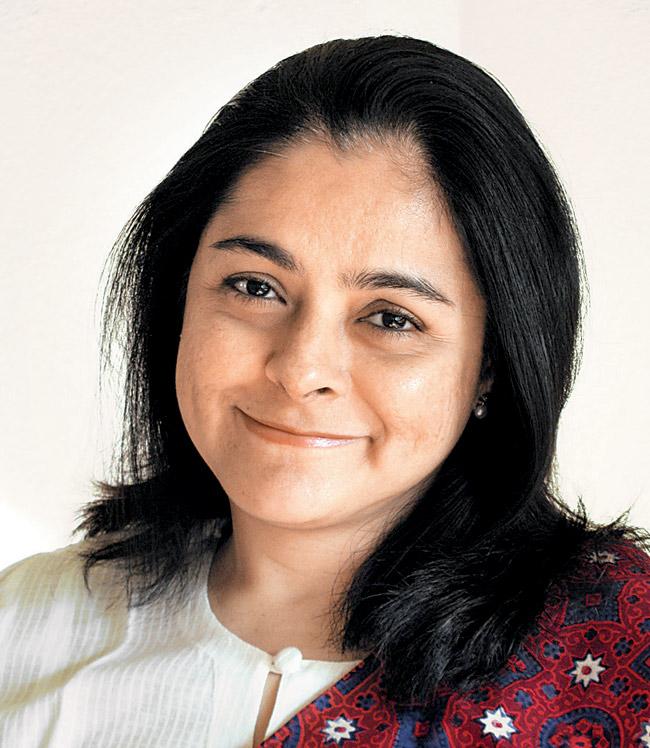Author Nandita Bhavnani's recent book, The Making of Exile, explores the lives of Sindhi Hindus post Partition

“We lived in Patna for two years. Then my father secured a job in Bombay, but there was no house. So he went to Bombay alone, and we had to stay with our uncle in Ahmedabad.

SEAT OF POWER: Mantralaya, the Maharashtra Chief Minister’s office. PIC/BIPIN KOKATE
ADVERTISEMENT
We didn’t attend any school there. Six months passed, and my father finally found accommodation in Bombay, at the Madh Island refugee camp.

EDUCATIONAL LANDMARK: National College
The Madh Island refugee camp was a very bad experience, with toilets outside. Prem Ahuja (who was later shot dead by K M Nanavati) was the camp commander there. He was my brother’s friend and was very nice to us.”

SETTING SAIL: Trawlers at Madh Island. PIC/PRADEEP DHIVAR
School time
“In Bombay, my mother happened to meet our school teacher from Karachi, Sita Samtani. She had helped transfer the Kamla High School from Hyderabad (Sindh) to Bombay. She told my mother to admit us in her school. She was very keen that we all should study. So we joined Kamla High School in 1950.

FORT FABLES: Standing the test of time is Bandra fort
We would walk through the Madh Island jungle, come by boat to Versova, then by bus from Andheri to the school in Khar. It was more than an hour’s commute, one way. Nobody else at the camp went to school like this. Moreover, unlike most others, we had private quarters at the camp: a personal bathroom outside our room, which nobody else could use. We felt as though we stood out, and the others at the camp began envying us.”

BY THE BAY: Bandra Bandstand as it is today. PICS/SAYED SAMEER ABEDI
A new house
“After Madh Island, we moved to Bandstand in Bandra. There were military shacks there, with toilets outside. But at least we were by the seashore. Later my brother built a bathroom for us indoors. There were 13 of us in one room — my grandmother, my parents, my father's brother and his wife, my father's sister, and two brothers and five sisters. Yet we never felt like it was cramped.

Nandita Bhavnani
We obtained government permission to build a small stone wall at the back of our shack, which was towards the sea. Our chacha-chachi began sleeping outside; there were no fans, no mosquito nets. My sisters and I too would study by the sea.

The cover of The Making of Exile
At that time, there were 18 shacks around Bandstand, and only two buildings. Film stars would come there for shoots. We had a lovely time, watching them, watching the sea. We would go for picnics to Bandra Fort, sing songs. I must say, I have not gone through difficult times like other people have. After Kamla High School, I went to National College. Sita Samtani had told us, ‘Don't give up your pursuit of academics.’ I was the only one who listened; my sisters stopped studying after completing their SSC Board exams. I graduated from National College, and later, from Law College.
The day I finished my SSC, I started working. First, at Kamla High School, teaching young children; then at Air India, with my brother-in-law’s help. I worked with Air India for over 30 years.”
Communal violence
“Those who witnessed or had been subjected to communal violence were naturally even more affected by Partition. Rochiram Godhwani was a youth of 17 when Partition became a reality. He lived in Karachi with his widowed mother and his six brothers, in a flat on Burns Road. During the Karachi pogrom, his family saw a mob of about 50 people approaching their building; they were saved because their landlord used his connection with the Sindh government to arrange for police protection in the nick of time. Images of the Karachi carnage remain alive for Rochiram Godhwani even today:
After the riots, when the curfew was lifted for two to three hours, and we went down, we saw on the handcarts… There were handcarts in Karachi at that time. And the police were carrying the bodies on handcarts. I can still see this before my eyes. I can see the dead bodies carried in handcarts.”
Wary of their new surroundings and their new neighbours — who could be unsympathetic or even hostile — while still attempting to resettle themselves, Sindhi Hindus often projected the brunt of their stress onto their fellow Sindhis. Victor Barnouw writes of the ‘milieu of rivalry between competing groups, fraud and mutual suspicion’ that prevailed among the ‘warring segments’ of Sindhis living in Pimpri camp. For several years, Mohan Panjabi helped Dr Choithram Gidwani deal with the government during the lengthy and arduous process of rehabilitating Sindhi refugees. He recounts his memories:
“The Sindhis had not even settled down, and they started attacking one another. Our letter was enough for them to get jobs, electricity, ration, free railway tickets, admission to schools and colleges. I must have signed thousands of such letters.
Yet, unable to tolerate each other, Sindhis would send in complaints that so-and-so had given a false report or that an affidavit happened to be bogus. [...] Those in Bombay’s Mantralaya (especially in the Chief Minister’s office), the Department of Rehabilitation, the university and other such institutions would show me these letters.
One incident is worth relating. I was sitting with the doctor [Choithram Gidwani] at Govind Vallabh Pant’s place. He had complete sympathy for us. Talking to us, he showed us a whole file of letters in which Sindhis had made complaints and accusations against each other. Pant said, ‘Under the present straitened circumstances, we are ignoring such letters, even though some may be justified. But make your fellow Sindhis understand.’ Dharam Vir, the rehabilitation secretary, also used to complain about this problem.”
Partition experience
It is difficult to make generalisations about the Partition experience of the Sindhi Hindus. The diversity of situations encountered by those Sindhis who experienced Partition arises from differences in class (the upper classes were relatively more sheltered from the trials and tribulations of Partition), region (by and large, residents of Karachi, and to a lesser extent Hyderabad, witnessed more violence than did those living elsewhere), and in the final destination (which played a significant role in rehabilitation).
Chance played a major role — for example, with people travelling on one bus in Karachi reaching home safely only to hear subsequently that the bus behind them had been ‘cleansed’ of Hindus. Age was a significant factor too: Younger refugees had their lives before them, and were able to rehabilitate themselves with relatively greater ease than the elderly who had deep roots in Sindh and were harder hit. There was also a great deal of diversity arising from personal choices. Those who chose to leave before the winter of 1947-48 were able to liquidate their assets and resettle themselves in Bombay with somewhat less difficulty than the lakhs who poured out of Sindh in 1948. Stories abound of well-to-do people — affluent businessmen, powerful zamindars - who became helpless paupers in India. Yet there are also plenty of rags-to-riches stories. Many Sindhi Hindus — pushed by desperation post-Partition — found in themselves the tremendous drive to make their lives succeed — typical of refugees the world over.
 Subscribe today by clicking the link and stay updated with the latest news!" Click here!
Subscribe today by clicking the link and stay updated with the latest news!" Click here!







